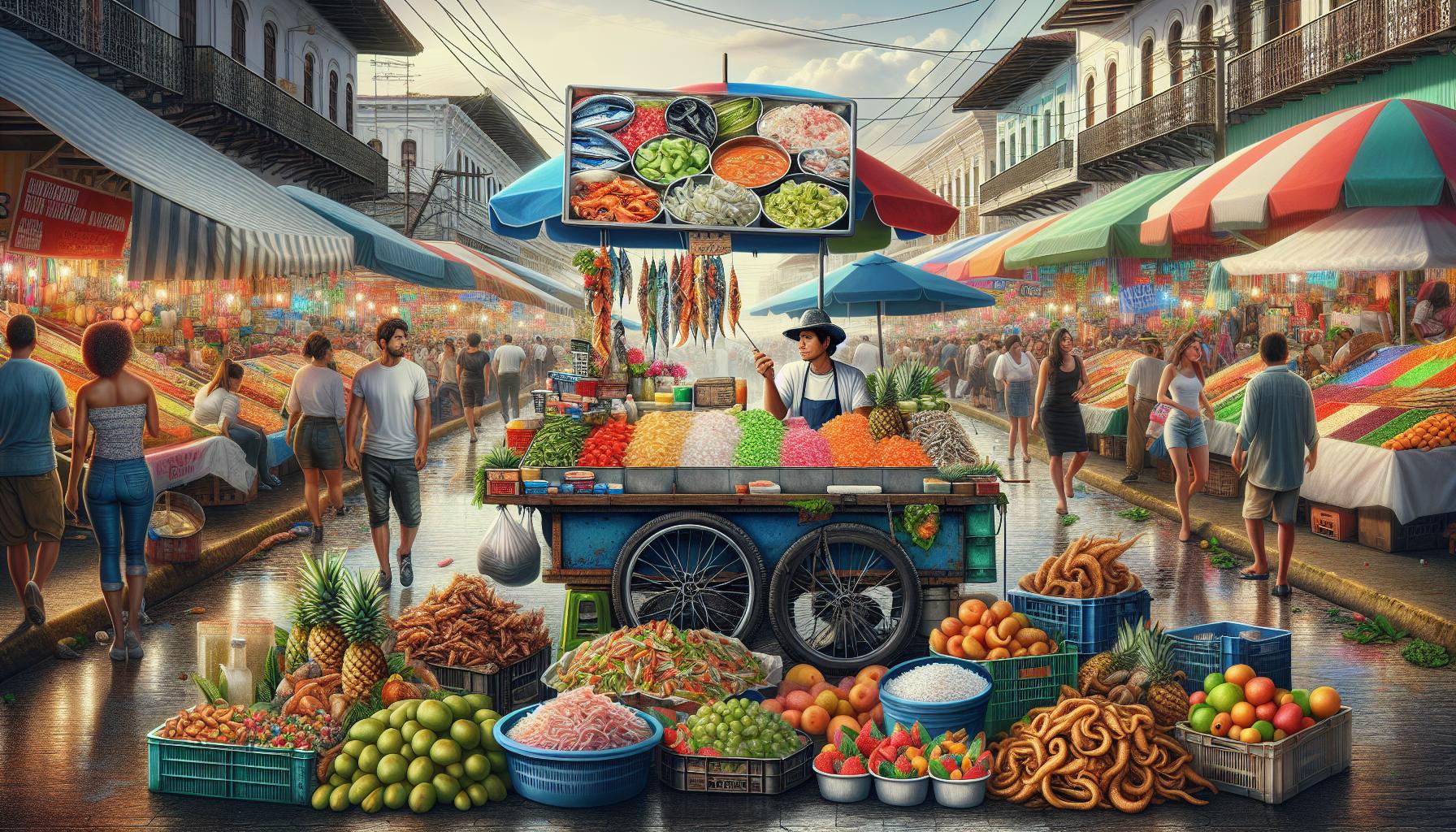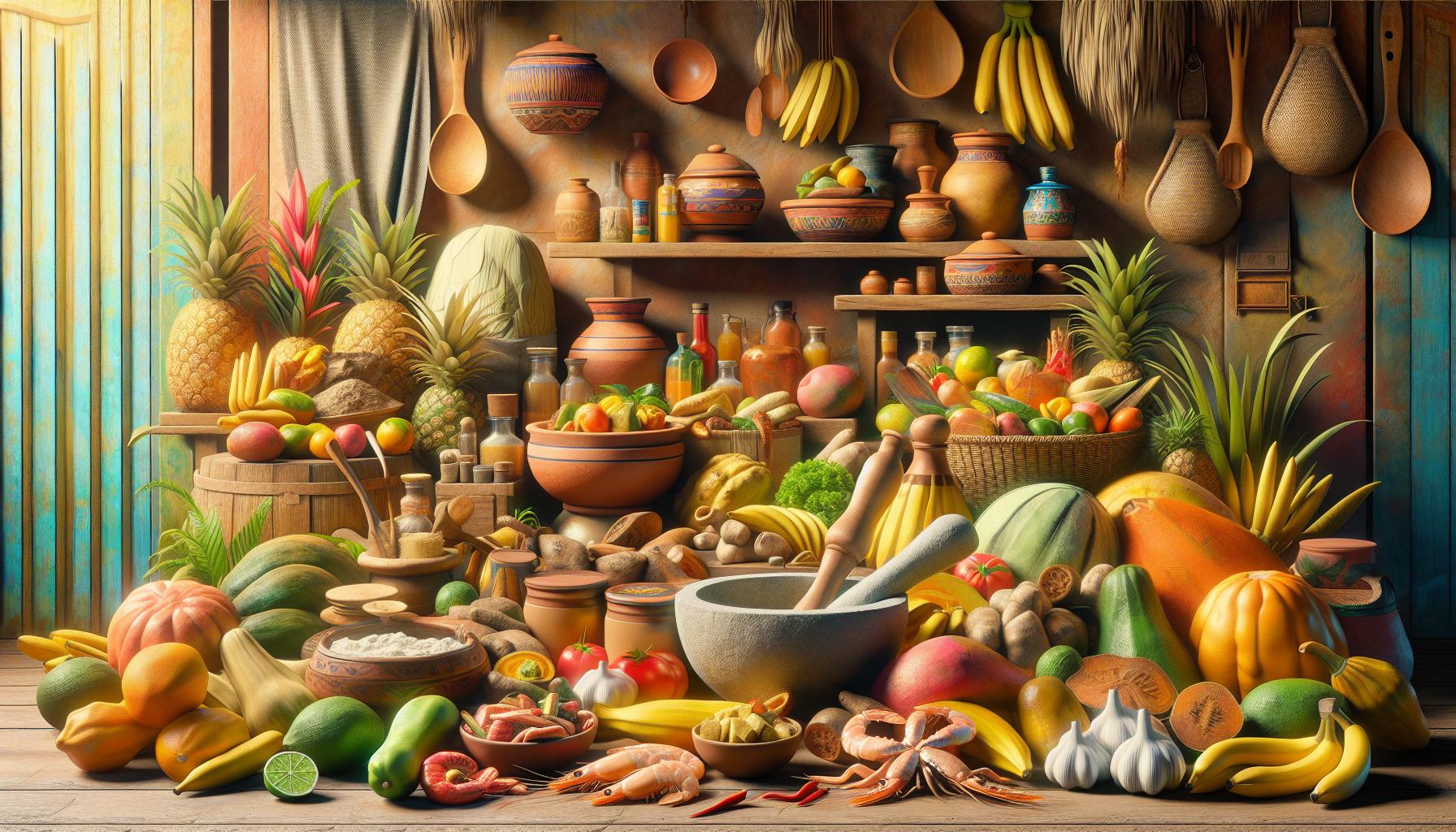Panama’s vibrant food culture tells a story as colorful as its national dress, blending influences from Spanish colonizers, African heritage and indigenous traditions. From sizzling street food carts to grandmother’s cherished recipes this Central American nation serves up a feast that’ll make taste buds dance with joy.
At the heart of Panamanian cuisine lies a beautiful mix of fresh seafood tropical fruits and hearty staples that reflect the country’s unique position as a bridge between two continents. Whether it’s the beloved sancocho (a traditional chicken soup) or the mouthwatering patacones (fried plantains) every dish carries centuries of cultural heritage and family traditions that continue to evolve in modern kitchens across the isthmus.
Panama Food Culture
Panamanian cuisine centers on locally sourced ingredients with a strong emphasis on fresh produce, grains and proteins. The country’s tropical climate and diverse geography create ideal conditions for growing an array of ingredients used in traditional dishes.
Rice and Corn-Based Dishes
Rice forms the foundation of Panamanian cooking, appearing in dishes like arroz con pollo, arroz con coco and arroz con guandú. Traditional preparations incorporate long-grain white rice cooked with local seasonings such as culantro, oregano and achiote. Corn serves as another essential staple, transformed into tortillas, tamales and fresh corn empanadas. Local varieties of corn include the purple mazorca, used in the preparation of chicha, a traditional fermented beverage. Specialty rice dishes feature seafood additions like corvina, octopus or shrimp, reflecting Panama’s coastal bounty.
Tropical Fruits and Vegetables
Panama’s fertile soil produces abundant tropical fruits including papaya, mango, pineapple and guanábana. Local markets display stacks of plantains used for patacones, otoe root vegetables and yuca for traditional side dishes. Root vegetables like ñame, yuca and otoe appear regularly in soups and stews. Fresh culantro herbs add distinctive flavor to traditional dishes like sancocho. Seasonal fruits like mamey, nance and maracuyá provide natural sweetness to desserts and beverages. Native chili peppers such as ají chombo contribute essential heat to Panamanian sauces and condiments.
Popular Panamanian Street Foods

Panama’s street food scene bursts with flavors that reflect its cultural heritage through convenient handheld delights. Local vendors line the streets with portable carts serving authentic dishes that capture the essence of Panamanian cuisine.
Empanadas and Tamales
Panamanian empanadas feature a crispy corn-based shell filled with seasoned ground beef, chicken, or cheese. Local vendors prepare these golden-brown crescents fresh throughout the day, serving them with spicy ají chombo sauce. Tamales in Panama differ from their Mexican counterparts, wrapped in banana leaves instead of corn husks. The masa (corn dough) contains chunks of chicken or pork, olives, raisins plus traditional seasonings. Street corners in Panama City’s historic Casco Viejo district offer both delicacies from early morning through late evening.
Fresh Seafood Delicacies
Panama’s coastal location provides abundant seafood options for street food vendors. Ceviche stands populate local markets, serving cups of fresh corvina (sea bass) marinated in lime juice with onions cilantro. Fish chicharrones present bite-sized pieces of fried fish seasoned with local spices served in paper cones. Vendors along the Cinta Costera waterfront specialize in camarón frito (fried shrimp) topped with criolla sauce made from tomatoes onions garlic. The Mercado de Mariscos stands as Panama City’s premier destination for sampling various seafood-based street foods under one roof.
Regional Culinary Influences

Panama’s culinary landscape reflects centuries of diverse cultural interactions along its strategic isthmus location. Regional influences shape distinct flavor profiles across different areas of the country, creating a rich tapestry of tastes.
Spanish Colonial Impact
Spanish colonization introduced essential cooking techniques that transformed Panamanian cuisine. European settlers brought olive oil rice garlic onions creating the foundation for modern Panamanian dishes. The Spanish influence appears prominently in dishes like arroz con pollo ropa vieja carimañolas. Traditional cooking methods such as slow-simmering stews sofrito-based seasonings emerged from this colonial period. These European ingredients merged with indigenous preparation techniques creating signature dishes like sancocho a hearty chicken soup featuring local root vegetables Spanish-style seasoning. The practice of preserving meats through salting smoking originated from Spanish colonial methods adapting to Panama’s tropical climate.
Caribbean and African Flavors
Caribbean African culinary traditions enrich Panama’s coastal regions with bold spices coconut-based preparations. African influences brought techniques for frying plantains creating dishes like patacones tostones. The Caribbean impact surfaces in seafood preparations incorporating scotch bonnet peppers coconut milk particularly in provinces like Colón Bocas del Toro. Dishes like rice coconut fish stews showcase these merged cultural influences. African cooking methods introduced the technique of slow-cooking tough cuts of meat creating flavorful stews. Caribbean spice combinations featuring thyme allspice oregano define the seasoning profiles of numerous Panamanian coastal dishes.
Famous Traditional Recipes

Panamanian cuisine features time-honored recipes passed down through generations. These dishes showcase the country’s cultural fusion of indigenous Latin American African Caribbean influences.
Sancocho (National Dish)
Sancocho stands as Panama’s national dish, combining chicken corn root vegetables in a hearty soup. Fresh cilantro parsley create its signature aroma, while yuca ñame add heartiness to the broth. Local cooks simmer the ingredients with culantro (a native herb) otoe (taro root) mazorca (corn on the cob) for 3-4 hours to develop deep flavors. This one-pot meal originated from rural communities where farm workers needed sustaining nourishment during long workdays. Traditional preparation includes serving the soup with white rice allowing diners to adjust seasoning with hot sauce or pickled onions.
Ropa Vieja and Patacones
Ropa Vieja transforms flank steak into tender shreds simmered in a tomato-based sauce with bell peppers onions garlic. The dish’s name translates to “old clothes,” referencing the meat’s appearance after slow cooking for 2-3 hours. Patacones accompany this dish as crispy twice-fried green plantain disks seasoned with salt. Cooks flatten the plantain slices between each frying session to achieve the ideal texture. These golden-brown rounds serve as both a side dish a scoop for sauces. Local restaurants often pair these items with arroz blanco coconut-infused beans to create a complete meal.
Dining Customs and Etiquette
Panamanian dining customs reflect the country’s relaxed Caribbean culture mixed with formal Spanish traditions. These practices emphasize family connections social bonds through shared meals.
Meal Times and Structure
Panamanians structure their daily meals around three primary eating times. Breakfast (desayuno) starts at 6:00 AM, featuring hojaldras (fried bread) coffee eggs. Lunch (almuerzo) occurs between 12:00 PM to 2:00 PM, serving as the main meal with rice meat vegetable combinations. Dinner (cena) takes place at 7:00 PM, offering lighter fare such as soup sandwiches. Many businesses restaurants close during lunch hours, allowing families to gather for midday meals.
Social Dining Traditions
Panamanian hosts welcome guests with “Mi casa es su casa” (my house is your house). Guests arrive 15-30 minutes after the stated time, bringing desserts or wine as gifts. Dining etiquette includes keeping hands visible on the table using utensils continental-style. Multiple generations gather for Sunday lunches, extending meals for 2-3 hours while sharing conversation. Children remain at the table until everyone finishes eating, participating in family discussions. Special occasions like birthdays holidays feature extended family gatherings with traditional dishes such as tamales arroz con pollo.
Modern Food Scene
Panama’s culinary landscape has evolved into a dynamic fusion of traditional flavors and contemporary innovations. The modern food scene reflects Panama City’s status as a global hub while maintaining strong connections to its cultural roots.
Contemporary Restaurants
Panama City’s restaurant scene features upscale establishments like Maito, which earned a spot on Latin America’s 50 Best Restaurants list. Local chefs incorporate indigenous ingredients into refined presentations at venues such as Donde José, offering intimate 10-seat dining experiences. The Casco Viejo district hosts numerous farm-to-table restaurants, emphasizing locally sourced ingredients from Panama’s diverse regions. Modern eateries like La Casa de los Mariscos specialize in elevated seafood dishes, serving fresh catches from both Pacific and Caribbean waters. Fine dining establishments in the capital blend sophisticated techniques with traditional Panamanian recipes, creating distinctive culinary experiences.
International Fusion Trends
Panama’s strategic location attracts global culinary influences, creating innovative fusion cuisines. Asian-Panamanian fusion restaurants combine local root vegetables with East Asian cooking techniques, producing dishes like yuca tempura and plantain sushi rolls. Contemporary chefs integrate Mediterranean ingredients into traditional Panamanian recipes, resulting in creations such as corvina ceviche with olive oil and herbs. Latin American fusion restaurants merge Peruvian, Mexican, and Panamanian flavors, offering dishes like chipotle-spiced sancocho. Food halls across Panama City showcase international vendors experimenting with local ingredients, creating unique combinations like patacón burgers and tropical fruit sushi.
Conclusion
Panama’s food culture stands as a living testament to the country’s rich history and diverse heritage. From humble street food vendors to innovative fusion restaurants the nation’s culinary landscape continues to evolve while honoring its roots. Traditional dishes like sancocho and patacones share the spotlight with modern interpretations that showcase Panama’s dynamic food scene.
The blend of indigenous African Caribbean and Spanish influences has created a unique gastronomy that’s both deeply rooted in tradition and open to contemporary innovation. This vibrant food culture reflects not just Panama’s history but its position as a modern culinary destination where family recipes and global flavors coexist in delicious harmony.

